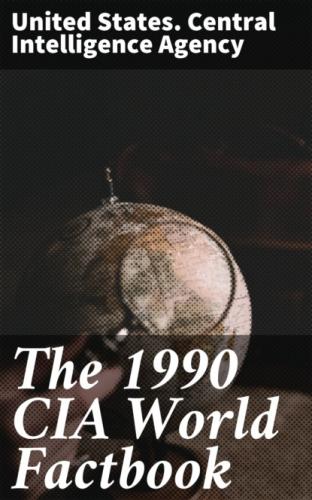Language: Spanish
Literacy: 94%
Labor force: 3,840,000; 38.6% services (including 12% government), 31.3% industry and commerce; 15.9% agriculture, forestry, and fishing; 8.7% mining; 4.4% construction (1985)
Organized labor: 10% of labor force (1989)
- Government
Long-form name: Republic of Chile
Type: republic
Capital: Santiago
Administrative divisions: 13 regions (regiones, singular—region);
Aisen del General Carlos Ibanez del Campo, Antofagasta, Araucania,
Atacama, Biobio, Coquimbo, Libertador General Bernardo O'Higgins, Los Lagos,
Magallanes y Antartica Chilena, Maule, Region Metropolitana, Tarapaca,
Valparaiso
Independence: 18 September 1810 (from Spain)
Constitution: 11 September 1980, effective 11 March 1981; amended 30 July 1989
Legal system: based on Code of 1857 derived from Spanish law and subsequent codes influenced by French and Austrian law; judicial review of legislative acts in the Supreme Court; has not accepted compulsory ICJ jurisdiction
National holiday: Independence Day, 18 September (1810)
Executive branch: president, Cabinet
Legislative branch: bicameral National Congress (Congreso Nacional) consisting of an upper house or Senate and a lower house or Chamber of Deputies
Judicial branch: Supreme Court (Corte Suprema)
Leaders:
Chief of State and Head of Government—President Patricio
AYLWIN (since 11 March 1990)
Political parties and leaders: National Renovation (RN), Sergio
Jarpa, president; Radical Party (PR), Enrique Silva Cimma;
Social Democratic Party (PSD), Eugenio Velasco; Christian Democratic
Party (PDC), Andres Zaldivar; Party for Democracy, Ricardo Lagos;
Socialist Party, Clodomiro Almeyda; other parties are
Movement of United Popular Action (MAPU), Victor Barrueto;
Christian Left (IC), Luis Maira; Communist Party of Chile (PCCh),
Volodia Teitelboim; Movement of the Revolutionary Left (MIR) is
splintered, no single leader; several leftist and far left parties
formed a new coalition in November 1988 with Luis Maira as president;
the 17-party Concertation of Parties for Democracy backed
Patricio Aylwin's presidential candidacy in December 1989
Suffrage: universal and compulsory at age 18
Elections: President—last held 14 December 1989 (next to be held December 1993 or January 1994); results—Patricio Aylwin 55.2%, Hernan Buchi 29.4%, other 15.4%;
Senate—last held 14 December 1989 (next to be held December 1993 or January 1994); seats—(47 total, 38 elected) 17-party Concertation of Parties for Democracy 22;
Chamber of Deputies—last held 14 December 1989 (next to be held
December 1993 or January 1994); seats—(120 total)
Concertation of Parties for Democracy 69
Communists: 120,000 when PCCh was legal in 1973; 50,000 (est.) active militants
Other political or pressure groups: revitalized university student federations at all major universities dominated by opposition political groups; labor—United Labor Central (CUT) includes trade unionists from the country's five-largest labor confederations; Roman Catholic Church
Member of: CCC, CIPEC, ECOSOC, FAO, G-77, GATT, IADB, IAEA, IBRD,
ICAO, IDA, IDB—Inter-American Development Bank, IFAD, IFC, IHO, ILO, IMF, IMO,
INTELSAT, INTERPOL, IPU, ITU, LAIA, OAS, PAHO, SELA, UN, UNESCO, UPU, WHO, WIPO,
WMO, WSG, WTO
Diplomatic representation: Ambassador Octavio ERRAZURIZ; Chancery at 1732 Massachusetts Avenue NW, Washington DC 20036; telephone (202) 785–1746; there are Chilean Consulates General in Chicago, Houston, Los Angeles, Miami, New York, and San Francisco; US—Ambassador Charles A. GILLESPIE, Jr.; Embassy at Codina Building, 1343 Agustinas, Santiago (mailing address is APO Miami 34033); telephone p56o (2) 710133 or 710190, 710326, 710375
Flag: two equal horizontal bands of white (top) and red; there is a blue square the same height as the white band at the hoist-side end of the white band; the square bears a white five-pointed star in the center; design was based on the US flag
- Economy Overview: In 1989 the economy grew at the rate of 9.9%, reflecting substantial growth in industry, agriculture, and construction. Copper accounts for nearly 50% of export revenues; Chile's economic well-being thus remains highly dependent on international copper prices. Unemployment and inflation rates have declined from their peaks in 1982 to 5.3% and 21.4%, respectively, in 1989. The major long-term economic problem is how to sustain growth in the face of political uncertainties.
GDP: $25.3 billion, per capita $1,970; real growth rate 9.9% (1989)
Inflation rate (consumer prices): 21.4% (1989)
Unemployment rate: 5.3% (1989)
Budget: revenues $4.9 billion; expenditures $5.1 billion, including capital expenditures of $0.6 billion (1986)
Exports: $7.0 billion (f.o.b., 1988); commodities—copper 48%, industrial products 33%, molybdenum, iron ore, wood pulp, fishmeal, fruits; partners—EC 34%, US 22%, Japan 10%, Brazil 7%
Imports: $4.7 billion (f.o.b., 1988); commodities—petroleum, wheat, capital goods, spare parts, raw materials; partners—EC 23%, US 20%, Japan 10%, Brazil 9%
External debt: $16.3 billion (December 1989)
Industrial production: growth rate 7.4% (1989)
Electricity: 4,044,000 kW capacity; 17,710 million kWh produced, 1,380 kWh per capita (1989)
Industries: copper, other minerals, foodstuffs, fish processing, iron and steel, wood and wood products
Agriculture: accounts for about 8% of GDP (including fishing and forestry); major exporter of fruit, fish, and timber products; major crops—wheat, corn, grapes, beans, sugar beets, potatoes, deciduous fruit; livestock products—beef, poultry, wool; self-sufficient in most foods; 1986 fish catch of 5.6 million metric tons net agricultural importer
Aid: US commitments, including Ex-Im (FY70–88), $521 million; Western (non-US) countries, ODA and OOF bilateral commitments (1970–87), $1.3 billion; Communist countries (1970–88), $386 million
Currency: Chilean peso (plural—pesos); 1 Chilean peso (Ch$) = 100 centavos
Exchange rates: Chilean pesos (Ch$) per US$1—296.68 (January 1990), 267.16 (1989), 245.05 (1988), 219.54 (1987), 193.02 (1986), 161.08 (1985)
Fiscal year: calendar year
- Communications Railroads: 8,613 km total; 4,257 km 1.676-meter gauge, 135 km 1.435-meter standard gauge, 4,221 km 1.000-meter gauge; electrification, 1,578 km 1.676-meter gauge, 76 km 1.000-meter gauge
Highways: 79,025 km total; 9,913 km paved, 33,140 km gravel, 35,972 km improved and unimproved earth (1984)
Inland waterways: 725 km
Pipelines: crude oil, 755 km; refined products, 785 km; natural gas, 320 km
Ports: Antofagasta, Iquique, Puerto Montt, Punta Arenas, Valparaiso,
San Antonio, Talcahuano, Arica
